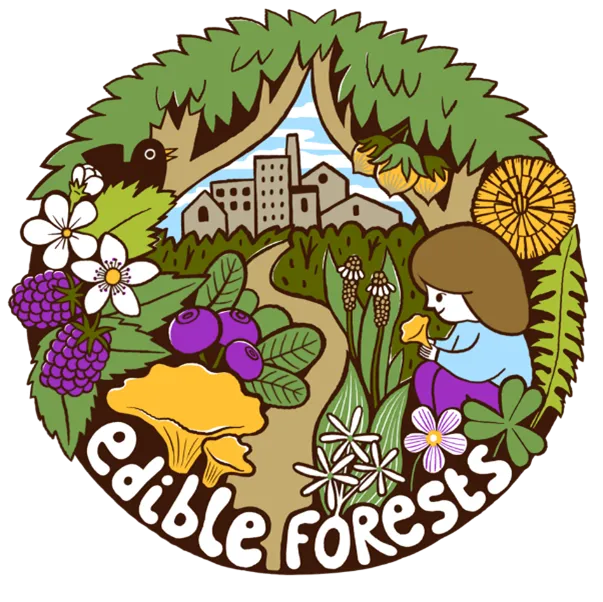Extending food production to Scotland’s underutilised lands
Project Lead

Challenges
Scotland’s future landscape will look very different having to accommodate increased urban spread, larger areas of afforestation and peatland restoration. Simultaneously, there is an immediate necessity to produce our food in the most efficient and environmentally friendly way possible, but mindful of restoring and enhancing important habitats for biodiversity.
Mainstream agriculture will have to quickly adapt to incorporate novel crops with the potential to contribute to Scotland’s emission targets. We must also identify opportunities for nature-based solutions as they could be pivotal in mitigating and adapting to climate change whilst restoring nature. Within this, there is a role for underutilised semi-natural and urban land to contribute best practices for the provision of Scotland’s nutrition, while protecting our natural capital.
Delivering a sustainable food system requires ambition to think beyond domestic agriculture, more widely than from farm to fork. While contributing to the economy, people’s livelihoods, and the health of the nation, it must also contribute to the protection of Scotland’s natural habitats. Wild plants are naturally resilient to pests and climate fluctuation, their ability to grow on marginal lands necessitates a need to thrive in poorer soil, without additional water or energy requirements. Their productivity does not compare to domesticated crops developed to depend on high nutrient and pesticide demands. However, their role to support the food supply chain should be revisited. Furthermore, many species grow within much-needed wildlife habitats, an important example being forests, which will be an increasing feature of Scotland’s Landscape.
Cultivation of wild plants is achievable across much of Scotland’s lands, particularly semi-natural lands, but also underutilised urban and coastal areas. It is amendable to scale providing opportunities from small independent producers to commercial scale on land not currently suitable for mainstream domestic agriculture. The wide range of species presents opportunities for unique locations, supporting a wide range of both rural and urban communities. Incorporation of wild plants into the food supply would not only supplement nutritional requirements but would help relieve part of the demand placed on a limited variety of crops to supply nutrition, which is undesirable from both a food security and biodiversity perspective.
Questions
Solutions
This project aims to provide a RoadMap for the Provision of Food on Scotland’s Marginal Lands that meet sector needs and protect natural capital. The remit is wide, including both urban and rural landscapes, and operates at scale from individual consumers through social enterprises and small businesses to larger commercial enterprises, landowners and third-sector organisations. The tight focus, however, is on wild species that can contribute towards sustainable food production, while meeting environmental and biodiversity targets.
Open-Source Database
As part of this project, an open-source database detailing the chemical composition of several of Scotland’s wild plants, as well as technologies to exploit these resources is being constructed. This database will offer opportunities to collate wider cultural resources (for example ethnobotanical sources, stories, myths, songs, art, and poetry) that support and maximise the economic and cultural impact of Scotland’s wild larder.
Citizen Science
This project is engaging with small-scale food producers (backyard gardeners, allotments, and community organisations) to deliver a community science project to explore the importance of sustainable food production that supports climate targets and biodiversity. Information will be collected on soil type (if known), gardening practice, germination time/success, time to harvest and yield. Participants will be encouraged to share photos, recipes, and stories to facilitate a conversation around climate, land use, biodiversity and health.
Regional and International Engagement
Regional procurement of food and drink ingredients has been identified as being an important aspect of green recovery, as well as supporting post-Brexit markets. Engaging with stakeholders situated within distinct landscapes and natural biota, including semi-natural highlands, semi-natural lowlands, underutilised urban central belt, underutilised urban highlands, coastal mainland, and coastal island will be an important focus. Similar projects regarding the reintroduction of wild relatives into the food supply chain exist within Europe and across the world and the aim is to host an international meeting focusing on the utilisation of marginal lands for food production with a strong environmental focus.
Project Partners
Progress
2023 / 2024
We are continuing to analyse the nutritional and bioactive content of wild plants. Working with the University of Aberdeen web-design team we are creating a front-end for this open-source database to provide appropriate access to different sectors. In discussion with several business and third sector organisations (e.g., Soil Association, Nourish, Scottish ecological design association, Highland Boundary, Orchard Project, Forest Land Scotland), we have looked to develop prototype products and models of the value of wild edibles to the food system. Several strong candidates have emerged (e.g., wild garlic, wild strawberries, water mint, rosehips) and based on a successful model in Bulgaria, we created a high-nutrient rosehip bread (which scored well at the Real Bread Festival) to demonstrate the potential of a product that can be produced widely on marginal lands. To demonstrate the value of farming on marginal lands, we secured additional funding for a studentship to deliver both a life cycle analysis of producing nutrient content per hectare in novel farming systems, which has allowed us to create a survey to collect information to develop a life cycle analysis initially for seaweed production systems. We have secured funding (BBSRC) for an international meeting on shifting our food system. We have widely disseminated our nature-based food solution ideas by producing a 12-page booklet, talks on climate and biodiversity for primary and secondary pupils, scientific talks, as well as presenting at several events; Wild Food Festival, Real Bread festival, Royal Highland Show, Caithness, Orkney and Shetland Association and a Scottish Ecological design association-organised event at Knock Farm. We have worked with local artists through additional funding to produce a project logo and promotion/dissemination material. We continue to translate our work internationally, new collaboration with the Liverpool School of Tropical Medicine to develop anti-microbials, presenting to Charles University in Prague on Nature-Based Food Solutions for Human Health and working with the University of Aberdeen School of Divinity, History and Philosophy to build collaboration within Sub-Saharan Africa to extend our work on wild edibles.
2022 / 2023
Data collected from a national survey of foragers (SEFARI-Gateway funded) has allowed us to compile maps of the most commonly foraged species and a report on the use and need of wild edibles in Scotland. This data has informed the selection of species for analysis and the creation of a database to collate information on important edible wild species. The Latin/Scientific, Gaelic and Scots names have also been collated, as well as a calendar for harvest. Samples are being collected and analysed for their nutrient and non-nutrient bioactive content. The outcomes of this work were shared at a stakeholder workshop (November 2022) attended by representatives from SEFARI (RGBE, JHI, SRUC, Rowett), SEFARI Gateway, RESAS, Nature Scot, ONE, Galloway Wild Foods, Stock free Farming, Aurora Sustainability, Association of Foragers, Forestry and Land Scotland, WWF and an independent writer/journalist and artist all with an interest in the potential of marginal lands and opportunities and barriers to production identified. Funding has been secured for a studentship to explore growing options for wild edibles and to model scale-up, which will compliment this work. Funding was also secured from UKRI (BBSRC/NERC; Molecules to Landscapes) to develop methods for exploring disruptive agriculture and wild food data has been utilised to develop a model linking unrelated datasets of similar metabolites across the agri-food sector.
Publications and other outputs
High throughput method development and optimised production of leaf protein concentrates with potential to support the agri-industry (2022) - paper published in the Journal of Food Measurement and Characterization by Ajay Iyer et al
Previous Projects
Related Projects
Dietary Components of Healthy Diets and their Effects
The current crisis in public health (obesity, diabetes, cardiovascular disease, stroke and some cancers) is strongly rooted in an imbalance in dietary components. A healthy balanced diet not only requires reductions in fat, salt, sugar, and in overall calorie intake, but also an increase in fibre and an appropriate level of protein intake. The aim of this RD is to strengthen our understanding of the role of dietary components (in particular fibre and protein) in a healthy diet.
